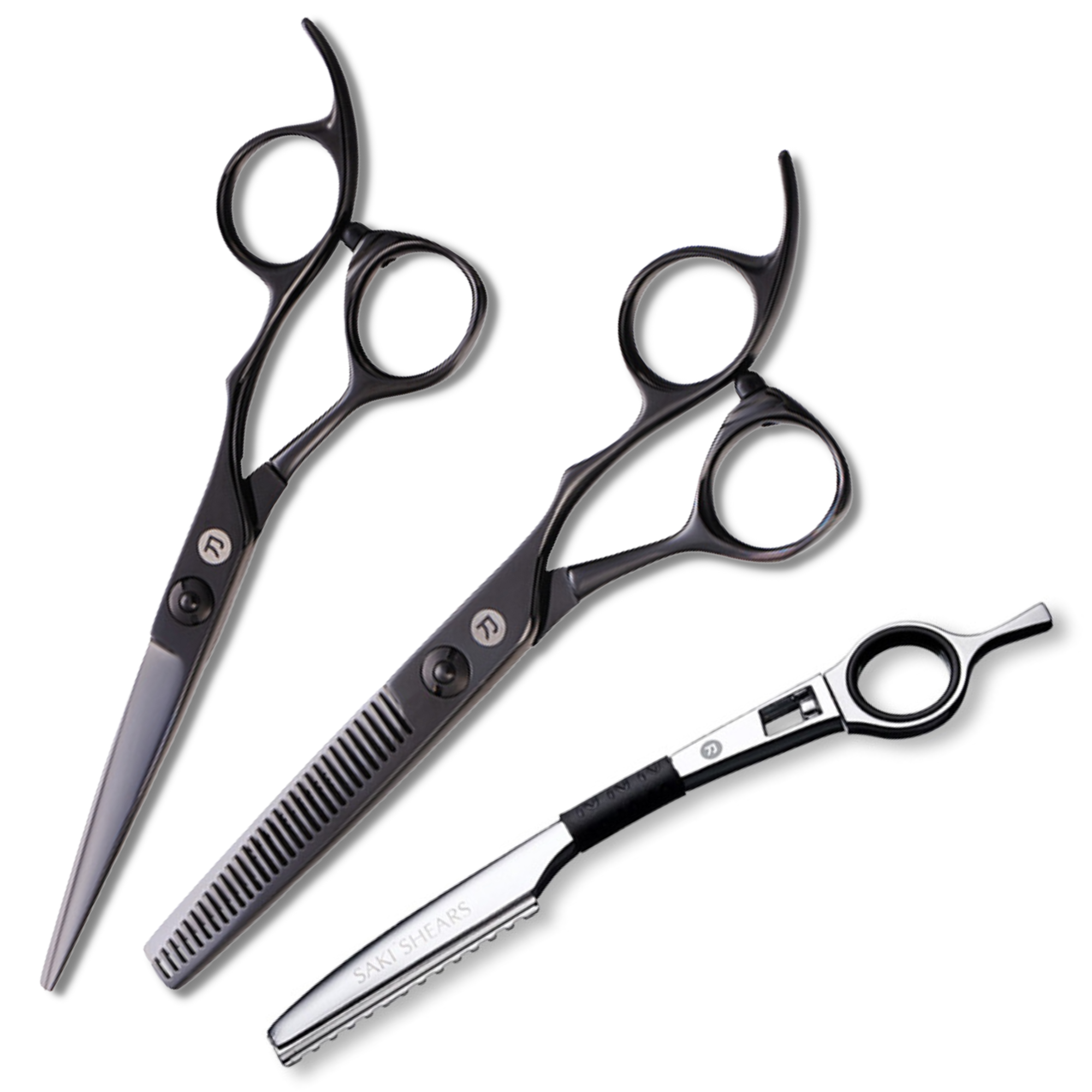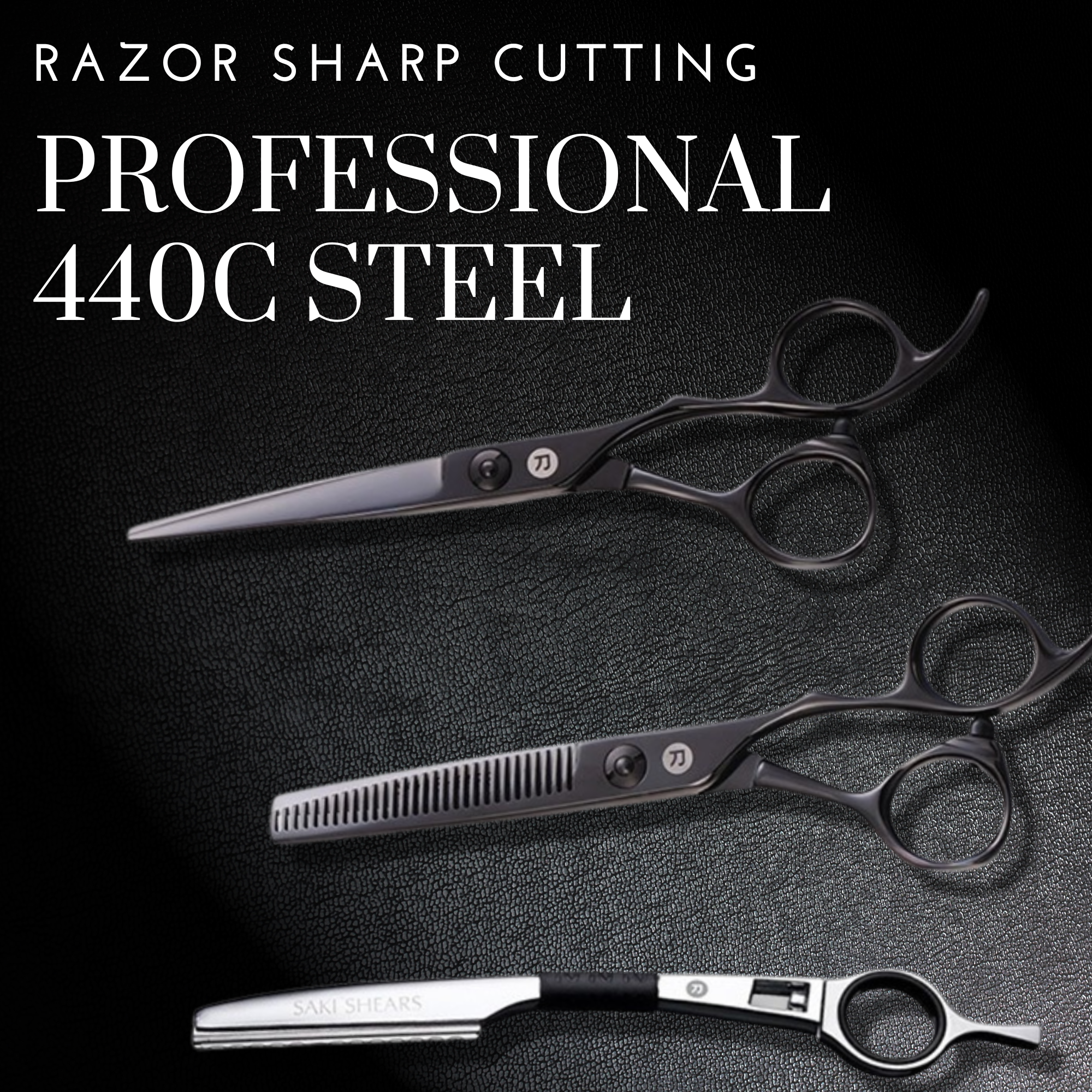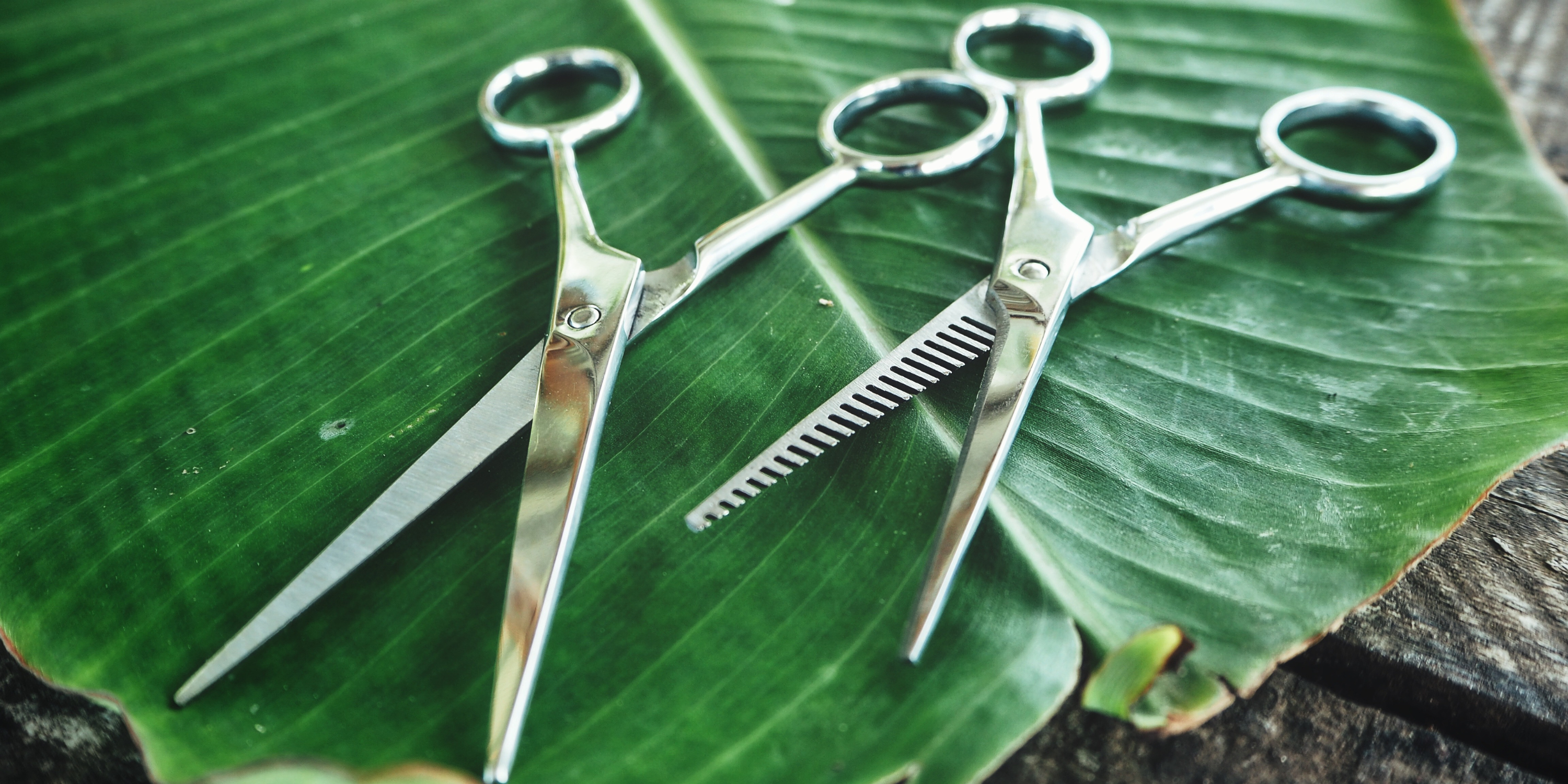The Economics of Hair Shears: Understanding Pricing, Quality, and Value for Money
In the hairdressing industry, hair shears are not just a tool; they're an investment. The quality of shears can significantly impact a stylist's work, affecting everything from the precision of their cuts to their efficiency and professional satisfaction. However, with prices ranging from under $50 to well over $500, understanding what drives these costs, how they relate to quality, and what represents value for money is essential. This article delves into the economics of hair shears, providing an in-depth analysis of these crucial factors.
Understanding the Costs Involved in Manufacturing Hair Shears
The journey of a pair of hair shears starts long before it reaches the stylist's hands. It begins with raw materials, primarily different types of stainless steel, including 440C, VG10, and ATS314. These materials are known for their hardness, which is crucial for maintaining sharpness over time. The market prices of these types of steel, often impacted by factors like availability, demand, and trade policies, contribute significantly to the cost of manufacturing shears.
Other material costs also come into play. Components like screws, bumpers, finger rests, and the packaging all add to the overall cost. Depending on the brand and quality of shears, these components can range from simple plastic parts to custom-designed pieces made from premium materials.
Beyond materials, labor costs also play a considerable role. Hand-forged shears, renowned for their superior quality and craftsmanship, require skilled labor, and the costs associated with this expertise can be substantial. The process of hand-forging shears is time-consuming and labor-intensive. It involves heating the steel, manually shaping it into blades, then cooling, tempering, and finally sharpening the blades. This process can take many hours, even for a single pair of shears.
On the other hand, machine-made shears, while less labor-intensive, carry the costs of machinery, maintenance, and operation. These manufacturing processes involve automated machinery to cut and shape the blades, reducing the time and manual labor required. However, the initial investment in machinery and the ongoing costs for maintenance and operation can be significant.
Overhead costs such as utilities, rent for manufacturing spaces, administrative expenses, and regulatory compliance further add to the cost of production. Manufacturers also need to consider the costs of marketing and distribution, including branding, advertising, participation in trade shows, and shipping costs.
Moreover, for companies at the cutting edge of shear design, research and development costs can be substantial, as they strive to innovate and enhance the performance of their shears. This might involve experimenting with new materials, testing new blade designs, or developing ergonomic features to enhance the comfort and ease of use for hairstylists.
The Pricing of Hair Shears
Translating these manufacturing costs into retail pricing involves a careful balancing act. While the aim is to cover costs and ensure a reasonable profit margin, pricing decisions also need to take into account market factors such as competition and customer willingness to pay.
Brands also need to consider their positioning in the market. A brand that positions itself as a premium choice will likely price its products higher to reflect that image, even if the manufacturing costs are similar to those of lower-priced brands. On the other hand, brands aiming for a more budget-friendly image might choose to absorb some of the costs in order to offer lower prices.
Brand reputation and perceived quality can also significantly influence pricing. Brands known for their superior quality, durability, and innovative design often command higher prices. Brands with a long history or those endorsed by well-known hairstylists might also be able to command higher prices due to their strong reputation in the industry.
Moreover, prices can vary across different markets, reflecting factors such as purchasing power, demand, and local competition. For instance, hair shears might be priced higher in a country with a high cost of living or a robust hairdressing industry, compared to a market with lower economic conditions or a less developed hairdressing sector.
Quality Across Different Price Ranges
Quality in hair shears is largely determined by the materials used, the manufacturing process, and the brand's reputation. Lower-end shears, often priced under $100, may use lower-quality steel and mass production methods, leading to a less durable product that requires more frequent sharpening.
Mid-range shears, typically priced between $100 to $300, often offer a balance of quality and affordability. They're usually made with better quality steel and may feature more ergonomic designs for increased comfort. Some mid-range shears may also offer features usually found in higher-end models, like adjustable tension systems or specialized blade designs.
High-end shears, priced from $300 and upwards, are typically characterized by superior craftsmanship, often hand-forged from the highest quality steel. They offer optimal sharpness and durability and often come with added features like tension adjusters and specialized blade designs for different cutting techniques.
The finishing of the shears also plays a role in their quality. High-quality shears often have a smooth, polished finish, with sharp, well-aligned blades and a balanced, comfortable feel in the hand. They might also come with a warranty or guarantee, offering peace of mind for the investment.
Assessing Value for Money
Value for money is a concept that goes beyond just the price tag. It's about balancing the cost of the shears against factors like their performance, durability, comfort, and the after-sales service provided by the manufacturer.
When assessing value for money, hairstylists should consider their specific needs and usage patterns. For a stylist who uses their shears heavily every day, investing in a high-end, durable pair that stays sharp longer may offer more value. On the other hand, a stylist just starting their career may find better value in a reliable mid-range pair that offers good performance at a more affordable price.
Another aspect to consider is the cost of maintenance. Higher-quality shears might require professional sharpening services to maintain their edge, which adds to their total cost of ownership. However, this cost might be offset by the longer intervals between sharpening and the extended lifespan of the shears.
The brand's reputation and after-sales service can also contribute to the value for money. Brands that offer excellent customer service, warranties, and easy access to spare parts and servicing can provide added value, ensuring that the hairstylist can maintain and repair their shears as needed and get the most out of their investment.
Making Informed Decisions
The world of hair shears is vast and varied. Understanding the economics behind these essential tools can help hairstylists make informed decisions, ensuring they invest in shears that not only meet their performance needs but also offer real value for money. Remember, the best shears for you are not just about the price or the brand. They're the ones that fit your hand perfectly, perform consistently, stand the test of time, and ultimately, make your craft a joy to practice every day. In the world of hair shears, knowledge is power, and understanding the economics behind your tools is an investment in your craft, your comfort, and your professional satisfaction.
Vendita di cesoie saki








Il set Saki Katana Hair Cutting è la coppia perfetta! Realizzato a mano e costruito utilizzando acciaio inossidabile giapponese e uno spesso rivestimento in titanio nero, il Saki Katana Hair Scissor e Thinning Shear offrono la massima durata per un paio di cesoie per capelli di lunga durata su cui puoi contare. Il set Saki Katana include le nostre cesoie premium per il taglio dei capelli, le cesoie per diradare i capelli, il rasoio e la custodia in pelle.
Opzioni:
Il set da 6 "include le cesoie da taglio Katana da 6", le cesoie da 6 ", il rasoio girevole e la custodia in pelle.
Il set da 7 "include le cesoie da taglio Katana da 7", le cesoie da 6 ", il rasoio girevole e una custodia in pelle.
Garanzia Gaki Katana Garanzia: Coperto da Cesoie Saki garanzia a vita
Cesoie per taglio Saki Katana
Le cesoie per capelli Saki Katana presentano un bordo convesso e una lama in acciaio inossidabile a tripla levigata per un taglio preciso e regolare, mentre la maniglia della gru extra lunga e offset combatte la fatica e offre il massimo del comfort. Ideale per il taglio smussato, bagnato e asciutto.Caratteristiche:
- Fatto a mano per la precisione
- Materiale: acciaio inossidabile giapponese
- Lama: Lama convessa stile giapponese con durezza 60-61 HRC
- Dimensione dell'anello: Regolabile
- Due pezzi saldati
- Rivestimento nero: rivestimento in titanio
- Spessore del rivestimento: 1,5 um
- Dimensioni: 6 pollici
Cesoie per diradamento Saki Katana
Saki Katana Thinning Shear è perfetto per diradare, miscelare e/o aggiungere consistenza a qualsiasi acconciatura con 30 denti e lame spesse e corte della spada. Offset, la maniglia extra-lunga della gru e le dimensioni dell'anello regolabile offrono il massimo comfort e supporto durante lo styling.
Caratteristiche:
- Fatto a mano per la precisione
- Materiale: acciaio inossidabile giapponese
- Lama: Lama convessa stile giapponese con durezza 60-61 HRC
- Dimensione dell'anello: Regolabile
- Due pezzi saldati
- Rivestimento nero: rivestimento in titanio
- Spessore del rivestimento: 1,5 um
- Dimensioni: 6 pollici/30 denti
Il tuo set Saki Katana include:
- 1 cesoie per capelli saki katana fatte a mano
- 1 cesoie per diradamento Saki Katana fatte a mano
- 1 rasoio girevole fatto a mano
- 1 Custodia
- Garanzia a vita
La linea di cesoie per capelli Katana Shears Saki è p Erfetto per maestri barbieri, hair stylist avanzati e parrucchieri professionisti.





